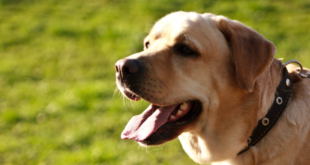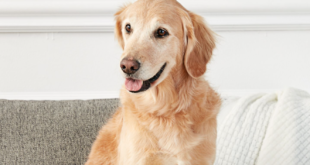Stepping out for a lovely walk with your new furry friend should be an enjoyable experience, but what if your puppy has other ideas? Pulling on the leash can be a frustrating and tedious problem for both pets and their owners. But with a little patience, practice, and understanding, your pup can learn to walk beside you with ease. In this article, we’ll delve into the art of mastering the leash, exploring effective techniques to tackle puppy pulling with confidence and ease. So, grab your leash, fasten it to the collar, and let’s get started!
Table of Contents
1. Pups and Pulling: Understanding the Issue
One of the most common behaviors among puppies is pulling on the leash during walks. While this may seem like a minor annoyance, it can quickly become a serious problem if left unaddressed. Not only can it be frustrating for the owner, but it can also put the pup in danger by leading them into hazardous situations.
It’s important for owners to understand the root cause of this behavior. In many cases, puppies pull because they have excess energy and excitement. They may also be trying to explore their environment or simply following their natural instincts to move forward. Understanding these underlying motivations can help owners find an effective solution.
- One common mistake that many owners make is relying too heavily on punishment or forceful training methods. Not only can this be cruel and ineffective, but it can also damage the bond between pet and owner.
- Instead, experts recommend positive reinforcement training, which rewards desirable behaviors with treats or praise. This can help puppies learn to associate good behavior with positive outcomes and encourage them to repeat that behavior in the future.
- Another important factor to consider is the type of leash and collar being used. Owners may want to invest in a harness or head collar, which can help distribute the tension more evenly and reduce stress on the pup’s neck and throat.
Overall, understanding and addressing pulling behavior is an important part of raising a happy and healthy puppy. With patience, consistency, and positive reinforcement techniques, owners can help their pups learn to walk calmly and safely on a leash.
2. Better Bonding: Tips to Train Your Puppy
Training your puppy is not only important for their development but also helps in strengthening your bonding with them. Here are some practical tips that can help you train your furry friend.
Start with Basic Commands
Start with basic commands such as “Sit,” “Stay,” and “Come.” Utilize positive reinforcement such as treats or praise when they follow the commands correctly. Practice these commands at different times so that they become a routine for your puppy.
Spend Quality Time
It is essential to spend quality time with your puppy every day. Engage in activities that they enjoy, such as playing with their favorite toys or going for a walk. This can help build trust and strengthen your bond with them. It is also essential to spend time training and correcting their behavior when necessary.
Ignore Bad Behavior
Ignoring bad behavior can be an effective way to teach your puppy not to repeat it. For example, if your puppy is jumping on you, turn away and avoid giving them attention. When they calm down, reward them with positive reinforcement. Consistency is key to successful training, and it takes patience and time.
3. Mastering the Leash: Techniques for Teaching Leash Etiquette
When it comes to teaching your dog leash etiquette, the key is patience and persistence. Don’t expect your furry friend to be a pro right away, but with enough practice and consistency, they’ll be walking on a leash like a champ.
Here are a few techniques to master the leash:
1. Start Slow: Don’t take your dog on a marathon walk right off the bat. Instead, start with short sessions in a low-distraction environment and gradually increase the length and challenge.
2. Use Positive Reinforcement: Reward your dog with treats and praise when they walk nicely on the leash. This will encourage good behavior and make the experience more enjoyable for both you and your pup.
3. Correct Unwanted Behavior: If your dog pulls on the leash or tries to chase after something, calmly say “no” and stop walking for a moment. Once they calm down, continue walking and rewarding good behavior.
Remember, mastering the leash takes time and effort, but with these techniques and a little patience, you and your furry companion will be taking delightful walks together in no time.
4. Common Mistakes: Avoiding Pitfalls in Training Your Pooch
It’s no secret that training your furry companion can be quite challenging, but it’s certainly worth it in the long run. However, there are common mistakes that pet owners can make that hinder progress and make the training experience more frustrating than necessary. Here are a few common mistakes to avoid when training your pooch:
– Inconsistency: Dogs thrive on consistency and routine. If you’re constantly changing the rules or your approach to training, it can confuse your pooch and set back progress. Make sure everyone in your household is on the same page when it comes to training and stick with a routine that everyone can follow consistently.
– Lack of patience: Training your pooch takes time and patience. It’s important to remember that your furry friend is learning and may not pick up on commands or behaviors immediately. Be patient and consistent with your training, and don’t get frustrated if progress is slow.
– No positive reinforcement: Positive reinforcement is an essential part of training your pooch. Ignoring good behavior or only focusing on negative behavior can discourage your furry friend and hinder progress. Make sure to praise and reward good behavior with treats, affection or playtime to reinforce positive behavior.
These are just a few common mistakes to avoid when training your furry companion. Remember, consistency, patience, and positive reinforcement are key to successful training. With time and effort, you and your pooch can achieve great results and build a strong, loving bond.
5. Succeeding with Success: Celebrating the Progress of Your Dog’s Progress
One of the best things about owning a dog is watching them grow and learn new things. Celebrating their progress can help both you and your furry friend stay motivated and encouraged. Here are a few things you can do to celebrate your dog’s progress:
-Throw a party: Invite your close friends and family members along with their pups and celebrate the milestones your dog has achieved. You can hang up celebratory decorations, bake some dog-friendly treats, and even hand out some awards for good behavior.
-Create a scrapbook: Documenting the progress of your dog can help you see how far they have come and also serve as a reminder of the fun moments you enjoyed together. You can include pictures, notes, and even small pieces of memorabilia to help you remember specific moments.
-Do something special: Take your dog to a new place they have never been before, such as a dog café or a dog-friendly ice cream shop. You could even take them on a hiking trail they’ve never been to before. Doing something special can help celebrate the progress your dog has made in training, behavior, or just being a great companion.
Remember, every dog has a unique personality and pace, so don’t feel discouraged if your dog isn’t progressing as quickly as you would like. Celebrating small victories and recognizing improvements is the key to success. Keep providing positive reinforcement, keep being patient, and most importantly, keep celebrating!
Congratulations! You are now a master of mastering the leash. You have the tools, the tricks, and the techniques to set your pup up for success on walks. And with patience, perseverance, and practice, your furry friend will be the talk of the town with their admirable leash manners. Until then, keep your eye on the prize and your pup’s foot off the gas—you’re on the road to a happier, healthier walk!
 Treat For Dog – Brain Training for Dogs, Dog Training & Obedience Discover Treat For Dog and get your pup on the path to smarter, happier, and healthier living with brain training for dogs.
Treat For Dog – Brain Training for Dogs, Dog Training & Obedience Discover Treat For Dog and get your pup on the path to smarter, happier, and healthier living with brain training for dogs.




